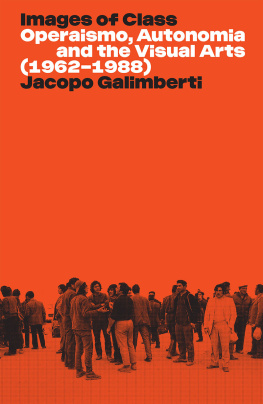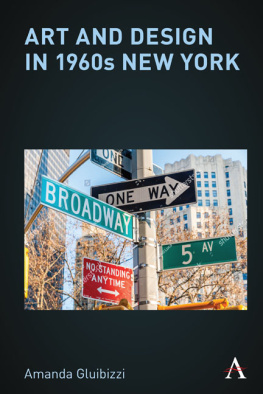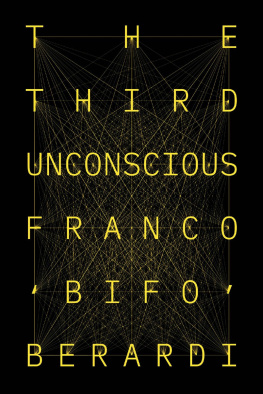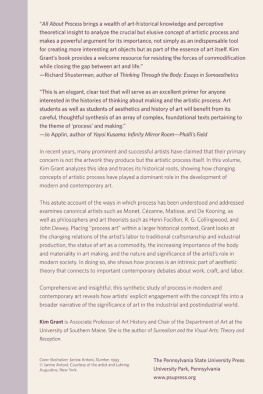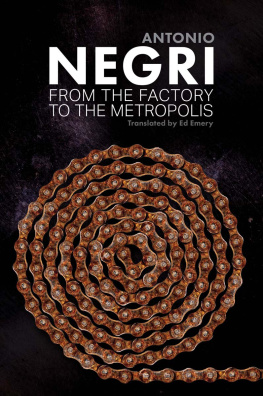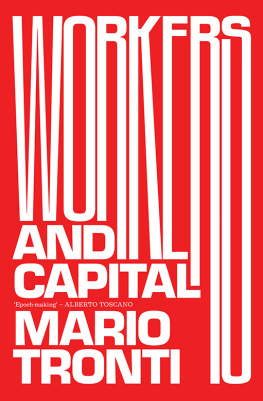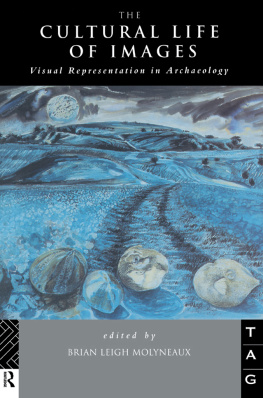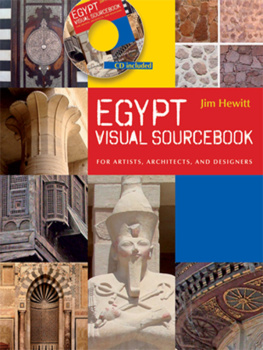Contents

Images of Class
Images of Class
Operaismo, Autonomia and
the Visual Arts (19621988)
Jacopo Galimberti

First published by Verso 2022
Jacopo Galimberti 2022
All rights reserved
The moral rights of the editor and authors have been asserted
1 3 5 7 9 10 8 6 4 2
Verso
UK: 6 Meard Street, London W1F 0EG
US: 388 Atlantic Avenue, Brooklyn, NY 11217
versobooks.com
Verso is the imprint of New Left Books
ISBN-13: 978-1-83976-529-2
ISBN-13: 978-1-83976-530-8 (UK EBK)
ISBN-13: 978-1-83976-531-5 (US EBK)
British Library Cataloguing in Publication Data
A catalogue record for this book is available from the British Library
Library of Congress Cataloging-in-Publication Data
A catalog record for this book is available from the Library of Congress
Typeset in Minion Pro by MJ&N Gavan, Truro, Cornwall
Printed and bound by CPI Group (UK) Ltd, Croydon CR0 4YY
Contents
Plates
Section 1
Section 2
Section 3
My problem [is] to turn into something positive that appalling violence that the memory of power produces in relation to the decade that begins with 1968, the most beautiful decade of our lives.
Antonio Negri, from Rebibbia Prison, 25 April 1981
The cultural hieroglyphics need deciphering: the scientific jargon must be translated into our own illustrious class vernacular.
Mario Tronti, 1970
One by one, the occupants of a sparsely furnished room take a seat in front of the stenographer (). Donning a set of headphones, they listen to a recording of courtroom proceedings and stage a live translation from the original Italian into the languages spoken where the performance is taking place. Often, they sound upset, but some remain composed, articulating a complex argument to refute the accusations that have been mounted against them. Sometimes they craft a more defiant voice, addressing an invisible judge. The performers of The Trial re-enact the judges questioning of the communists who stood in the 7 April trial. Sitting on the actual benches of the courtroom, the audience listens to a theatrical rendering of the hearings, as the seamless transcript is a montage that reduces one hundred hours of trial recordings to six. The extracts are reassembled to create a narrative that begins in the 1960s and ends in 1977. The author of the performance, the artist Rossella Biscotti, also made a silent film that accompanies the re-enactment, providing glimpses of the hall of justice where the trial took place between 1982 and 1984. One of the finest examples of 1930s rationalist architecture in Rome, the building hovered ominously over the accused, perhaps reminding them that the trials criminal procedure code had been penned by jurists under Fascism. The Casa delle Armi (House of Arms), designed by Luigi Moretti, had initially been used to host fencing competitions before being repurposed to serve as a courtroom and ultimately falling into decay in the 2000s. Biscottis film captures its dismantling. Her camera focuses on the removal of the concrete blocks that secured the cell bars behind which defendants observed the proceedings. At Biscottis invitation, some of them are shown roaming in the empty hall.

Figure 0.1. Rossella Biscotti, Il Processo / The Trial, 201014, six-hour re-enactment of the 7 April Trial with live typist and translators, audio and video equipment, furniture, video. Installation view at e-flux in New York, 2013. Photo by Ray Anastas.
Biscotti created The Trial between 2010 and 2013, and the performance was presented in different venues, including the 2012 documenta. Biscottis work reminds us that the special law exponentially extended the duration of preventive detention, transforming it into a de facto prison sentence without a proper hearing. But the word trial also means test, casting an even darker shadow on the 7 April trial. It suggests that it was also a way of testing public opinion, anticipating future political repressions against putative terrorists.
The Culture of Operaismo and Autonomia
The Trial presents an event using a plurality of visual media, from architecture to film, ready-made objects, oral testimonies and archival documents. Despite the obvious differences between an artistic performance and a written account, The Trial and this book share a number of ambitions and working materials. Here, the narrative relies on the specific conceptual texture of images, supported by oral history and dozens of unpublished or little-known texts, to create a new historical approach to understanding the two decades of radicalism that were put on trial in the early 1980s. In particular, this book focuses on two connected strands of Marxism: operaismo (also known as workerism) and the components of the autonomia (autonomy) movement that were informed by it. Unlike the vast majority of the research that has been conducted on these currents, this volume concentrates on the works and concepts developed by the artists, architects, designers, as well as by the art/architecture historians/theorists, who were active alongside the groups associated with operaismo and autonomia. The chapters encompass three generations, beginning with the enthusiasm of de-Stalinisation and ending in the late 1980s with the incipient attempts to historicise twenty years of revolts and projects. The 7 April trial does not, therefore, seal the narrative. For all of its devastating repercussions in terms of political ostracism and amnesia, the trial did not annihilate the impulse to comment in artistic ways on the legacy of the 1970s struggles. At the peak of the repression, when possession of a copy of the magazine A/traverso or the monthly Potere Operaio could occasion a police investigation, artists and architects who had not been involved in the trial pursued a dialogue with their jailed comrades and produced works that warrant sustained analysis. The transnational reappraisal of operaismo and autonomia especially after the worldwide success of Michael Hardt and Antonio Negris Empire demonstrates
The existing literature on operaismo and autonomia tends to examine these currents from the perspectives of political theory and social movement studies. While this approach is undoubtedly pertinent, it is also reductive. In fact, as much as operaismo and autonomia were revolutionary movements, they were also complex sociocultural formations involving aspects that pertained to epistemology and ethics, as well as aesthetics. Yet the term aesthetics requires a caveat. Here, it has an expansive meaning: it describes visual practices and communicative strategies, implying neither a canon nor an overarching system. Operaismo did not elaborate any sort of general aesthetic, but rather categories, attitudes and approaches to artistic and architectural production that shared an air of kinship. The translation of these ideas into tangible pictures, as well as the appropriations and creative misreadings inherent to how artists incorporated political concepts into their practice, is what this book seeks to explore. An interrogation of this translation requires a focus not simply on the dual relationship between visual arts and politics, but, rather, on the triangulation between visual arts, political ideas and the production of knowledge. In order to minimise the hermeneutical violence immanent to the semantic transpositions from ideas to images (and vice versa), this work explores the living connective tissue made up of debates, readings, militant hubs and personal acquaintances that merged artists and theorists. To further avoid the spectre of vague homologies between visual and textual materials, the book discusses practitioners whose exposure to operaismo and autonomia is a manifest and demonstrable feature of their biography and work.

